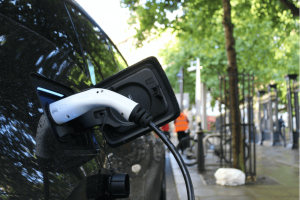2021 was a milestone year for electric vehicles in the United States. Purchases of such vehicles increased by more than 60% last year and this trend is expected to continue through 2022. That’s good news for President Joe Biden, who has stated that by 2030 the majority of vehicles sold should be zero-emission. In this regard, users who are thinking of buying an EV often ask “are there EV charging stations near me?” and require an assertive answer.
It’s natural for there to be some reluctance to change. Drivers are used to one type of technology, and not only that. They’re also used to finding charging stations everywhere, and they expect the same if they choose an electric car. That’s why it’s common to hear, “Where are the EV charging stations near me?”. The good news is that the EV charging stations network continues to expand in the US, and the plan is that it will continue to grow in the coming years, hand in hand with the increase in sales of this form of mobility.
“How can I find electric car charging stations near me?”
The sale of EVs keeps booming worldwide. With the announcement by different manufacturers of the upcoming new EV models, more people are thinking about a definitive change of technology. That’s why changes are being made to the EV charging network infrastructure.
The best way to find EV charging stations near you is to understand how chargers are distributed across the United States. Depending on the state, finding a charger can be an easy or slightly more complex task. Let’s dive into this.
The website and blog EV adoption, which is dedicated to gathering all the information related to the massive adoption of electric vehicles, estimated that by September 31, 2021, there were 2,147,070 electric vehicles in the United States. They also stated that there are almost 110,000 charging stations distributed in different ways. Within the states with the highest number of charging stations, we find:
- California: 34,185 ports.
- New York: 6,547 ports.
- Florida: 5,774 ports.
In California, there’s the famous West Coast Electric Highway. EVCS installed a large number of Level 2 chargers and fast-chargers across the WCEH. In 2021 and 2022 they continue to work on improving the technology of the existing chargers and installing new DC fast chargers.
To find these fast-chargers, EVCS created a map that can be used either from their mobile app or from their website. Their users can search using zip code, address, or city, and find the nearest chargers.
How does electric vehicle charging work?
Electric chargers operate by pulling an electrical current, either from an outlet or from a grid. They deliver this energy to the vehicle to recharge its batteries. Think of it like when you plug your cell phone into the charger that’s connected to the wall socket.
Electric vehicle chargers use kW, which is a rate of energy flow. The amount of energy flowing into the EV in an hour is called kWh (kilowatt-hour). The more power a charger provides, the faster it will charge an EV.
There are three types of chargers divided into different levels, according to their power in kW. Level 1 chargers are the standard chargers and the slowest ones available. They have a power of between 3 kW and 6 kW and charge a standard electric vehicle in about 24 hours.
Level 2 chargers are between 7 kW and 22 kW of rate, and charge an electric vehicle in about 8 hours. They are found in both residential areas and public charging stations.
DCFCs are the fastest chargers on the market and are rated at 50 kW or more. These can recharge a standard EV to 100% in between 15 and 60 minutes. Drivers can find these chargers in public stations.
So, now you know how easy it is to find EV charging stations near you!












